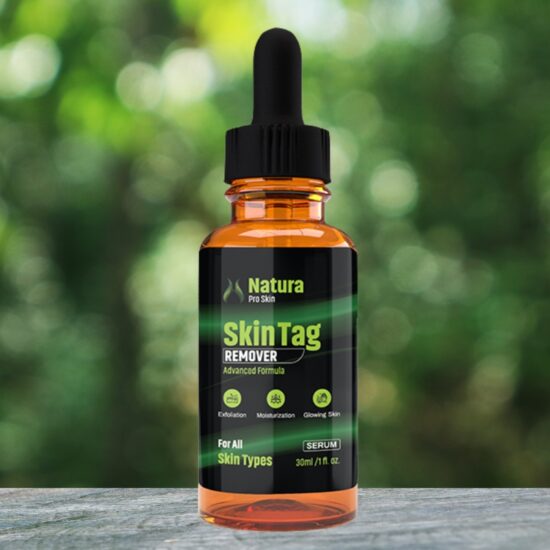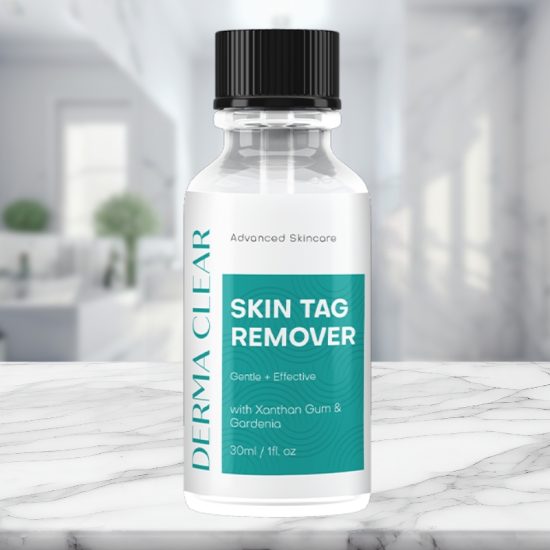Experience superior sun safety with Blue Lizard Sunscreen, crafted by experts and trusted by dermatologists. Our mineral-based formula reflects harmful UV rays, providing effective protection for sensitive skin and your family's health. Free from Oxybenzone and Octinoxate, it's ocean-friendly and safe for the reefs. With a unique Blue Cap that signals when it's time to apply, you’ll never miss a beat. Water-resistant for up to 80 minutes, Blue Lizard is perfect for outdoor adventures. Choose Blue Lizard for worry-free sun protection – because healthy skin deserves the best care while enjoying the great outdoors.
Description
Sunscreen is one of the simplest yet most effective ways to protect skin from premature aging, sunburn, and skin cancer. But in a crowded market of lotions, sprays, and gels, it’s not always easy to choose the right one. That’s where Blue Lizard Sunscreen stands apart — blending dermatologist-approved mineral formulas with innovative packaging, gentle ingredients, and reef-safe standards.
In this in-depth guide, we’ll explore the history, science, and benefits of Blue Lizard Sunscreen, examine its product range, compare it to other brands, and share expert advice on how to get the most out of your sun protection.
The Origins of Blue Lizard Sunscreen
From Australia to the World
Blue Lizard was originally developed in Australia, a country where the sun is strong, the UV index is high, and sunscreen isn’t optional — it’s a necessity. Australia also has some of the strictest sunscreen regulations in the world, which helped shape Blue Lizard’s quality-focused formulas.
In 1998, Blue Lizard made its debut in the United States, initially sold only through dermatologists’ offices. Over time, word-of-mouth spread, and the brand expanded into major retailers, online marketplaces, and international markets.
The Meaning Behind the Name
The name “Blue Lizard” is more than just catchy branding. It’s a reference to the brand’s UV-reactive packaging — the bottle or SmartCap™ changes color in the presence of harmful UV light. Like a lizard adapting to its surroundings, the packaging reacts to sunlight, serving as a visual reminder to reapply sunscreen.
This SmartCap™ technology has become one of the brand’s defining features, loved by parents, athletes, and anyone who needs a simple cue to maintain protection throughout the day.
Mineral Sunscreen: The Science & Benefits
What Is Mineral Sunscreen?
Mineral sunscreen — also called physical sunscreen — is a type of sun protection that relies on naturally occurring minerals such as zinc oxide and titanium dioxide as its active ingredients. Unlike chemical sunscreens, which absorb UV rays and convert them into heat within the skin, mineral sunscreens work by creating a protective, physical barrier on the skin’s surface. This barrier reflects and scatters harmful ultraviolet (UV) radiation before it can penetrate the skin and cause damage.
These mineral particles are inert and non-reactive, which is why they are often recommended by dermatologists for people with sensitive, allergy-prone, or eczema-prone skin. They are also less likely to cause stinging or redness, making them a go-to option for use around the delicate eye area or on children’s skin.
Zinc oxide is especially valued because it offers true broad-spectrum coverage, meaning it effectively blocks both UVA rays (which accelerate skin aging and contribute to skin cancer) and UVB rays (which cause sunburn). Titanium dioxide is excellent at blocking UVB rays and short-wave UVA rays, though it’s often combined with zinc oxide to provide the most complete coverage possible.
One of the unique advantages of mineral sunscreen is that it starts working immediately upon application — there’s no need to wait 15–30 minutes before sun exposure, as with most chemical sunscreens. Additionally, mineral formulas are generally considered reef-safe, as they do not contain certain chemical filters like oxybenzone and octinoxate that have been linked to coral reef damage.
In the case of Blue Lizard Sunscreen, the brand uses these mineral actives in carefully balanced formulas to deliver broad-spectrum SPF protection, combined with skin-soothing ingredients such as aloe vera and vitamin E. This makes them not only effective but also comfortable to wear for extended periods, whether you’re at the beach, on a hike, or simply going about your day.
Why Choose Mineral Over Chemical Sunscreen?
When it comes to sun protection, one of the most important choices you’ll make is whether to use a mineral (physical) or chemical sunscreen. Both protect the skin from harmful UV radiation, but they work in fundamentally different ways — and those differences can have a significant impact on your skin’s comfort, your health, and even the environment.
How They Work
-
Mineral Sunscreens – Use zinc oxide and/or titanium dioxide to form a physical shield on the surface of your skin. They work by reflecting and scattering UV rays away before they can penetrate your skin cells. Protection is immediate upon application.
-
Chemical Sunscreens – Contain synthetic UV filters (like oxybenzone, avobenzone, or octocrylene) that absorb UV radiation and convert it into heat, which is then released from the skin. They require 15–30 minutes after application to become fully effective.
Benefits of Choosing Mineral Sunscreen
-
Immediate Protection
Because mineral formulas sit on the skin’s surface, they start protecting you the moment they’re applied — perfect for busy mornings, active kids, or spontaneous outdoor activities. -
Gentle on Sensitive Skin
Chemical sunscreens can sometimes cause stinging, redness, or allergic reactions, especially for those with eczema, rosacea, or highly reactive skin. Mineral sunscreens are less likely to cause irritation because their active ingredients are inert and non-reactive. -
Broad-Spectrum Coverage
Zinc oxide, in particular, is one of the few sunscreen ingredients that provides exceptional UVA and UVB protection on its own, helping prevent both sunburn and long-term sun damage. -
Better Tolerated Around the Eyes
Chemical sunscreens can cause stinging if they migrate into the eyes during sweating or swimming. Mineral options like Blue Lizard are generally more comfortable for the delicate eye area. -
Reef-Safe & Environmentally Friendly
Many popular chemical filters, such as oxybenzone and octinoxate, have been shown to damage coral reefs and disrupt marine life. By avoiding these, mineral sunscreens help protect both your skin and fragile aquatic ecosystems. -
Stable Under Sunlight
Some chemical filters can degrade when exposed to sunlight, reducing their effectiveness over time. Mineral ingredients remain photostable, meaning they maintain consistent protection for as long as they’re on your skin.
Why Blue Lizard Focuses on Mineral Protection
Blue Lizard chooses mineral sunscreens not as a trend but because they align with the brand’s core values:
-
Safe for all ages — from infants over 6 months to adults with sensitive skin.
-
Effective without compromise — broad-spectrum, water-resistant, and reliable under real-world conditions.
-
Environmentally responsible — fully compliant with reef protection laws and eco-conscious ingredient standards.
By choosing mineral over chemical sunscreen, you’re not just protecting yourself from harmful rays — you’re also making a choice that benefits your skin’s long-term health and supports environmental sustainability.
Blue Lizard’s Ingredient Philosophy
One of the defining qualities of Blue Lizard Sunscreen is its thoughtful approach to ingredient selection. The brand doesn’t simply focus on delivering sun protection — it carefully formulates each product to balance efficacy, skin comfort, and environmental responsibility.
Ingredients They Avoid
Blue Lizard makes a deliberate choice to leave out certain ingredients that are either unnecessary for effective sun protection or carry potential risks to skin health and the environment:
-
Oxybenzone and Octinoxate – These chemical UV filters have been linked to coral reef bleaching and other forms of marine ecosystem damage. Many destinations, such as Hawaii and parts of Florida, have banned sunscreens containing these chemicals. By excluding them, Blue Lizard ensures its formulas are reef-friendly and safe for use in environmentally sensitive areas.
-
Fragrances – While scent may enhance the sensory appeal of a product, synthetic fragrances are common irritants that can trigger allergic reactions, rashes, or flare-ups in people with sensitive or eczema-prone skin. By keeping products fragrance-free, Blue Lizard prioritizes skin health over cosmetic appeal.
-
Parabens and Phthalates – These preservatives and plasticizers have faced scrutiny for potential hormonal disruption and other health concerns. While research on their effects continues, Blue Lizard chooses to avoid them altogether to provide peace of mind to cautious consumers.
Ingredients They Include
Instead of relying on potentially harmful additives, Blue Lizard builds its formulas around proven, skin-friendly ingredients that work in harmony to protect, soothe, and maintain healthy skin:
-
Zinc Oxide & Titanium Dioxide – These mineral actives form the backbone of Blue Lizard’s sun protection. They create a physical barrier on the skin that reflects and scatters UV rays, offering broad-spectrum protection without the irritation often associated with chemical sunscreens.
-
Aloe Vera – Known for its cooling, calming, and hydrating properties, aloe vera helps soothe the skin after sun exposure while supporting moisture retention. This makes the sunscreen more comfortable for prolonged wear.
-
Vitamin E – A potent antioxidant, vitamin E helps neutralize free radicals generated by UV exposure. It also nourishes and conditions the skin, enhancing its natural barrier function.
-
Dimethicone – This skin-safe silicone creates a silky, smooth texture and forms a lightweight, breathable layer on the skin’s surface. It locks in moisture, improves spreadability, and ensures even coverage for maximum sun protection.
This ingredient philosophy reflects Blue Lizard’s mission: to create sunscreens that protect people’s skin without compromising on safety, comfort, or environmental integrity. Each formula is a balance of scientific performance, skin sensitivity awareness, and eco-consciousness, making it a trusted choice for families, outdoor enthusiasts, and environmentally aware consumers alike.
The Product Range: Something for Everyone
Sensitive Collection
-
SPF 50 broad-spectrum.
-
Hypoallergenic, fragrance-free.
-
Great for children and adults with reactive skin.
Sheer Face SPF
-
Lightweight formula designed for daily wear.
-
Dries clear with minimal white cast.
-
Includes antioxidants and blue-light protection.
Sport & Kids Formulas
-
Designed for active lifestyles.
-
Up to 80 minutes water resistance.
-
Easy to apply lotion or spray formats.
Spray Sunscreens
-
Quick, convenient application.
-
Reef-safe, mineral-based.
Expert Recognition
Dermatologists regularly recommend Blue Lizard, and it has been featured in:
-
Allure’s Best Mineral Sunscreens
-
Vogue’s Best Non-Toxic Sunscreens
-
InStyle’s Clean Sunscreen Awards
-
Glamour’s Top Spray Sunscreens
Experts praise its consistent performance, reef-friendly formulas, and skin compatibility.
Real-World User Experiences
Parents appreciate that it’s tear-free for kids, while athletes value the water resistance during workouts and swimming. Common praise includes:
-
No greasy residue.
-
Gentle on eczema-prone skin.
-
Reliable even in high-UV conditions.
How to Apply for Maximum Effectiveness
-
Apply liberally 15 minutes before sun exposure.
-
Use about 1 ounce for full-body coverage.
-
Reapply every 2 hours, or after swimming/sweating.
-
Watch for the blue cap cue as a reminder.
Seasonal Sun Safety Tips
-
Summer: Reapply more often when sweating heavily.
-
Winter: UV rays can reflect off snow — don’t skip sunscreen.
-
Cloudy days: Up to 80% of UV rays still penetrate clouds.
Myths & Facts About Sunscreen
Myth: Darker skin tones don’t need sunscreen.
Fact: All skin can suffer UV damage and develop skin cancer.
Myth: Sunscreen causes vitamin D deficiency.
Fact: Normal incidental sun exposure still supports vitamin D production.
Blue Lizard vs. Competitors
Compared to many popular brands, Blue Lizard:
-
Offers more mineral-only options.
-
Avoids reef-harming chemicals.
-
Features UV-reactive packaging for easy reminders.
FAQs About Blue Lizard Sunscreen
Q1: Is Blue Lizard safe for babies?
Yes. Blue Lizard’s Baby and Sensitive formulas are pediatrician-recommended for infants over 6 months of age. They are fragrance-free, paraben-free, and made with gentle mineral ingredients like zinc oxide and titanium dioxide. For infants under 6 months, it’s best to consult a pediatrician before applying any sunscreen.
Q2: Does it leave a white cast?
Some mineral sunscreens naturally leave a white or slightly tinted layer on the skin due to their zinc oxide content. However, Blue Lizard’s Sheer formulas are designed to minimize this effect. When applied properly and rubbed in well, most users find that it blends in without leaving a noticeable residue.
Q3: Is Blue Lizard Sunscreen reef safe?
Yes. All Blue Lizard products are free from oxybenzone and octinoxate, two chemicals linked to coral bleaching. This makes them compliant with many reef protection regulations, such as those in Hawaii and parts of Florida.
Q4: How often should I reapply Blue Lizard Sunscreen?
Reapply at least every 2 hours when outdoors, and more frequently after swimming, sweating, or towel-drying. The SmartCap™ technology — which turns blue in UV light — can help remind you when it’s time for another application.
Q5: Is Blue Lizard water resistant?
Yes. Most Blue Lizard formulas are water-resistant for up to 80 minutes. This means they provide protection during swimming or heavy sweating but must be reapplied afterward to maintain effectiveness.
Q6: Can I use Blue Lizard Sunscreen on my face?
Absolutely. Blue Lizard offers specific facial sunscreens, such as the Sheer Face Lotion, that are lightweight, non-comedogenic (won’t clog pores), and blend in well under makeup. The Sensitive formula can also be used on the face for those with reactive skin.
Q7: Is Blue Lizard Sunscreen suitable for sensitive skin?
Yes. Blue Lizard’s Sensitive and Baby lines are hypoallergenic and free from fragrances, parabens, and chemical active ingredients. These formulations are gentle on eczema-prone, allergy-prone, or easily irritated skin.
Q8: Where can I buy Blue Lizard Sunscreen?
It’s available at major retailers, pharmacies, and online through the official Blue Lizard website, Amazon, Walmart, Target, CVS, and other authorized sellers. Buying from trusted sources ensures you get authentic, fresh product.
Q9: How much should I apply for full protection?
Dermatologists recommend about 1 ounce (a shot glass full) of sunscreen for full-body coverage. For the face alone, use a nickel-sized amount. Even mineral sunscreens require adequate coverage to provide full SPF protection.
Q10: Can Blue Lizard be worn under makeup?
Yes. Many users wear the Sheer Face SPF or Sensitive formulas under makeup without issues. The lightweight texture works well as a primer layer, though some may prefer to let it absorb for a few minutes before applying foundation.
Final Thoughts
Blue Lizard Sunscreen is more than just another product on the crowded sunscreen shelf — it represents a thoughtful balance between proven dermatological science, gentle, skin-friendly ingredients, and a genuine respect for environmental well-being. Its mineral-based formulas, enriched with zinc oxide and titanium dioxide, offer broad-spectrum protection that stands up to both daily wear and the harshest outdoor conditions.
What truly makes Blue Lizard stand out is the brand’s commitment to user awareness and habit-building. The innovative SmartCap™ technology — which changes color in the presence of UV light — transforms sunscreen application from a forgettable chore into an easy-to-follow routine. This visual cue is particularly valuable for families with children, outdoor athletes, and anyone juggling busy days where reapplication can easily slip the mind.




